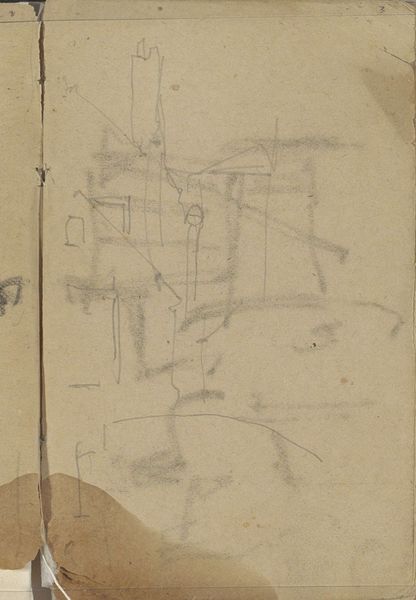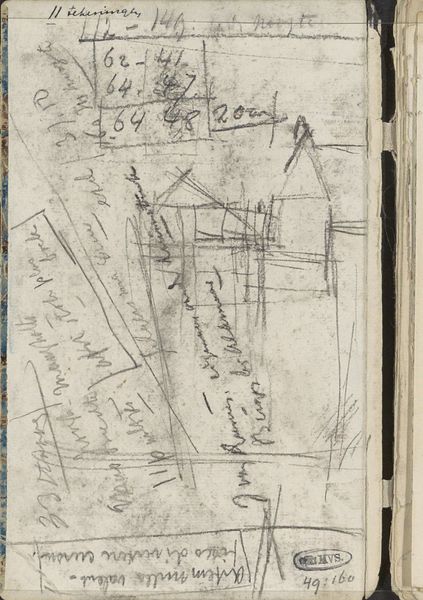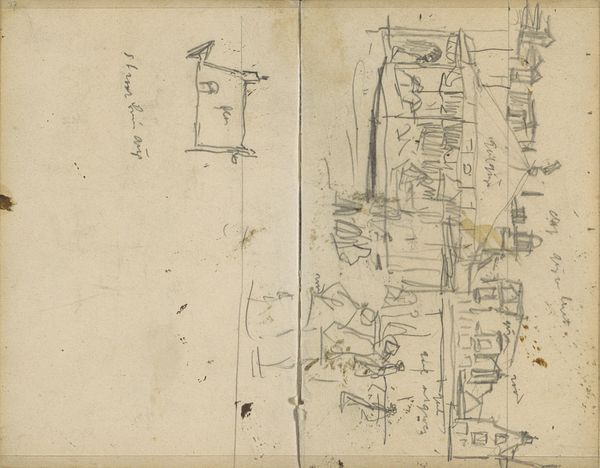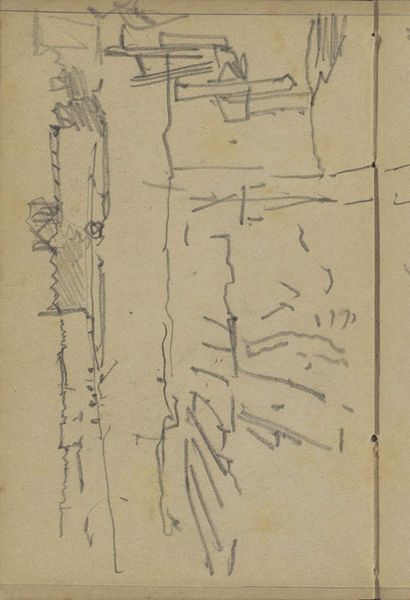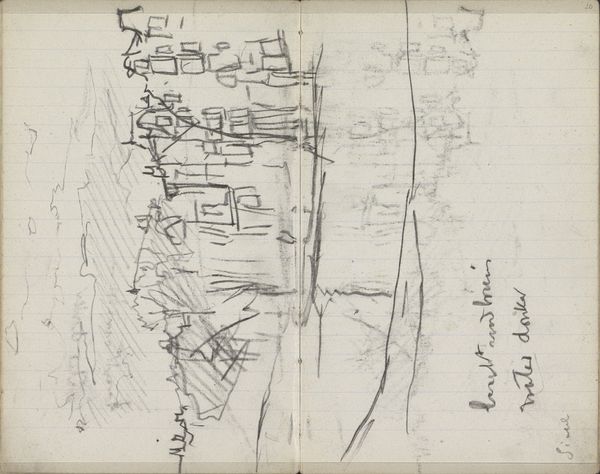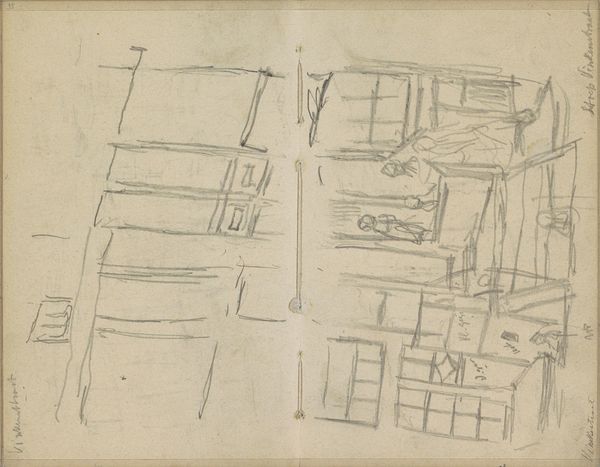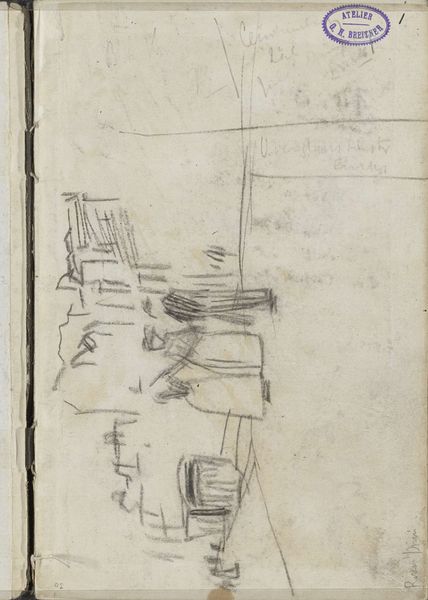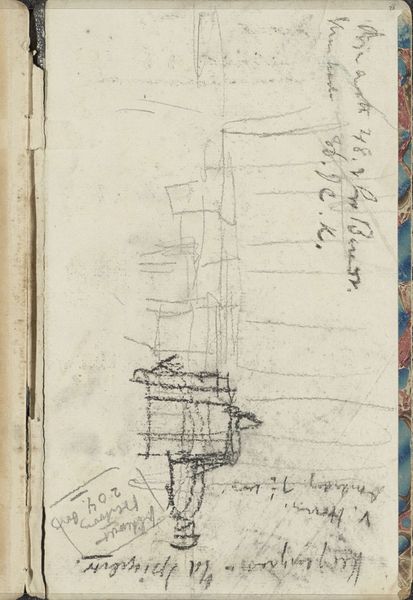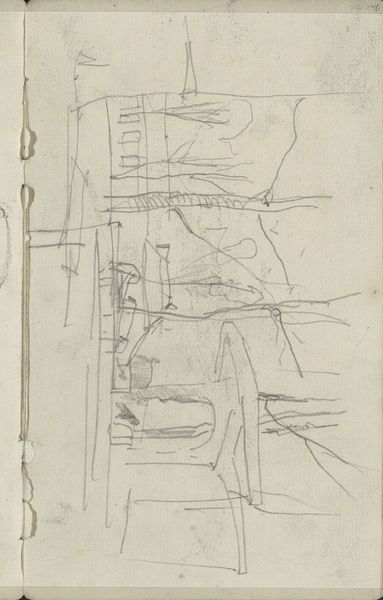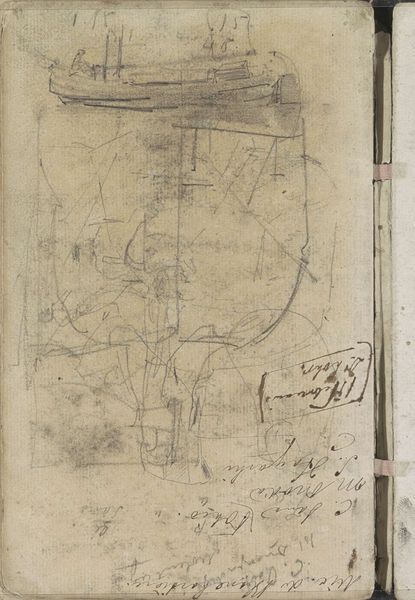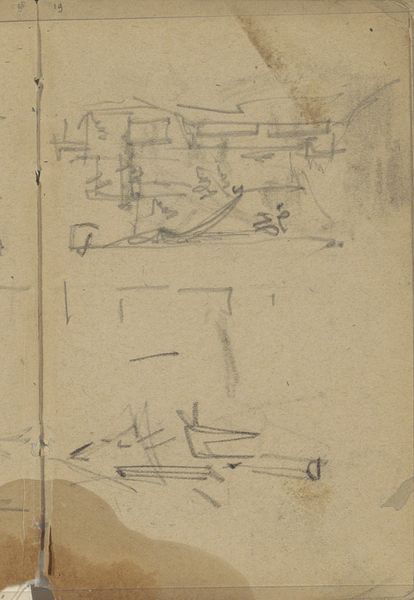
Copyright: Rijks Museum: Open Domain
Curator: Here we have George Hendrik Breitner's "Architectuurstudie," a drawing made sometime between 1886 and 1923, rendered in pencil on paper. You can find it in the Rijksmuseum's collection. Editor: It strikes me as almost a palimpsest of ideas—so many overlapping lines and barely discernible shapes. There's a beautiful incompleteness to it, as if we're catching a glimpse of the artist's mind at work. Curator: That's fitting. Breitner was deeply engaged with depicting the modern, rapidly changing urban environment. Drawings like these were vital to his process. They weren’t necessarily meant to be polished finished works, but rather tools for observation and documentation. Editor: I agree. Looking closely, you see how he’s focused less on perfect architectural rendering and more on capturing the play of light and shadow, using swift, almost frenetic strokes. It feels incredibly immediate and present. Curator: Absolutely, and the social context here is key. Breitner positioned himself as the "people's painter." He saw the city not as a static collection of buildings but as a dynamic, living space filled with ordinary people—a space that was evolving dramatically at the time. These studies would eventually inform his larger paintings and photographic works. Editor: But beyond the socio-historical significance, there's just something inherently visually captivating in how Breitner allows the sketch to remain raw and exposed, without trying to fully resolve forms. The textures created by the pencil on paper are also remarkable. Curator: Yes, he's really letting us see his thought process—almost like a stream-of-consciousness mapped out on the page. The urban expansion of Amsterdam was a politically charged subject—he may have wished to portray the turmoil caused by rapid urban development. Editor: In a way, it transcends the specificity of the architecture itself, becoming a study of perception and movement, of seeing as a process, more than a static depiction. Curator: Agreed. The fact that it’s preserved as a museum piece now, though, gives it a new layer of meaning, beyond just a preliminary sketch, right? Editor: Precisely. It's transformed from a private study into a public document, inviting us to contemplate not only the image itself but also the artistic process and its ever shifting societal value. Thank you, this was fascinating.
Comments
No comments
Be the first to comment and join the conversation on the ultimate creative platform.
